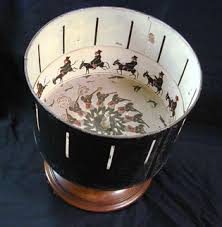During this week, I was unable to attend the visit to Kelvingrove. However, I had previously visited the museum several times before and had discussed with peers that attended the session what was included.
I love the idea behind museums, and feel that any child would benefit from a visit to such a wonderful place. It is not just the artwork (which in itself is amazing) that the children may be able to experience. They get to see so many different art forms in one place. There are sculptures, paintings, period clothing and even a Drama dress up station. Even the building itself is a work of art.



Having access to these resources enables children to experience different times throughout history, while still having fun! They are able to understand how people lived in different time periods and can understand their situations much better than if they had read it from a book.
Museums are a great way for pupils to engage in history. Many children naturally question things in life. Allowing them the experience of seeing and touching objects from history first-hand can aid pupils in having a deeper connection to the people of the past. This can create an empathetic bond for pupils, as they will be able to put themselves in other shoes – sometimes literally! This is also a good way to introduce the concept of teaching about evocative objects, which students have been working on throughout this module.
“Art gives us an experience like nothing else can, a chance to connect, understand, and explore perceptions, feelings, and innovative thoughts. Museums provide a space for reflection, experimentation, inspiration, creativity, enjoyment and allow for authentic learning experiences and play. Bringing children to the museum reveals children and adults as being equally active in learning, putting them on equal standing as they create a shared understanding. It’s a democratic process.” —Jamee Yung, Education Coordinator, Weisman Art Museum
I feel really strongly about allowing pupils the opportunity to experience these free resources such as museums and galleries. It is a fun and stimulating way of helping children to get in touch with history and unlock emotions.
References:
Gross, R. (2014). The Importance of Taking Children to Museums | NEA. [online] Arts.gov. Available at: https://www.arts.gov/art-works/2014/importance-taking-children-museums. [Accessed: 6th April 2017]
























